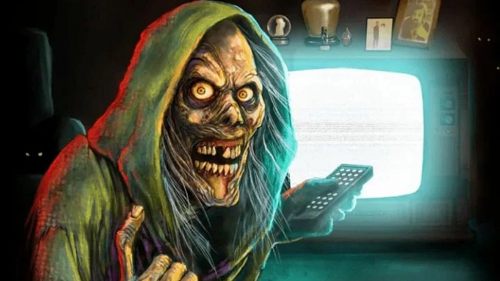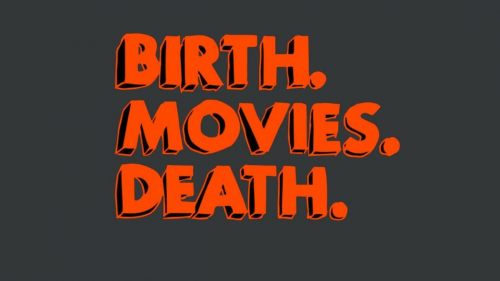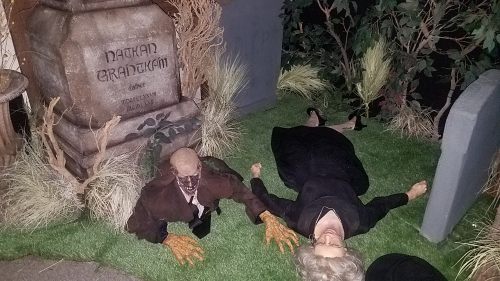Tale From The Crypt: The Ghoulish Origin Of EC Comics
Stephen King grew up on the gory, humorous yarns in E.C. Comics’ seminal Tales From The Crypt, The Vault Of Horror and The Haunt Of Fear. Writing about the philosophy of fear in Danse Macabre, King said,“Those horror comics of the Fifties still sum up for me the epitome of horror,” so it was no surprise that when he and George Romero got together to make Creepshow, an anthology movie based on King’s short stories, they used the E.C. model -- garish scares, a poetic justice ending and a horror host wraparound -- as their foundation.
By now everybody is familiar with E.C. and their titles, and the way that horror comics became the face of everything morally corrupt in 1950s youth culture. Everybody’s heard about the crusade of Fredric Wertham and the Senate Subcommittee on Juvenile Delinquency. Everybody knows that the heat from these investigations forever changed comics, that the Comics Code Authority and the Silver Age of superheroes sprung from it and that Tales From The Cryptand its sister publications slunk back into the tomb. But where did E.C. Comics start? That story begins with the very first comic book.
William Gaines was the publisher of E.C. Comics when his four color carnage almost ended the comic book industry -- which his father, MC Gaines, supposedly started. The elder Gaines claimed to have created the very first comic book. He didn’t invent the comic strip -- comics had been a going concern for a while when Gaines came on the scene. What he did was compile them into a pamphlet.
MC Gaines was a salesman for Eastern Color Printing in 1933 and the story -- as he told it -- is that one day he was struck with inspiration while throwing out the Sunday funnies. What if all those comics could be put together and used as a giveaway for Proctor & Gamble, a big Eastern Color client looking for a new angle for promotion? Gaines printed up the books on the printer’s third shift, when the machinery normally lay dormant, and he called it Funnies On Parade. P&G turned it down, but Gaines wasn’t deterred, and soon enough many major companies -- Kinney Shoes, Wanamaker Department Store, Canada Dry -- were giving away these comic books by the thousands. Those comics wouldn’t be completely recognizable to modern audiences -- they were tabloid sized, and they were 64 pages long. But they were the first comic books.
That led to Gaines’ next brainstorm: what if he put a ten cent price on the cover. Would kids actually pay a dime for these? They did -- and did they ever. In 1934 Gaines took the idea to Dell, who published Famous Funnies. This comic was what we know as a modern comic book -- half the size of a tabloid newspaper and 36 pages long. The comic book was a major seller, and it would just be four years until a couple of kids from Cleveland introduced the world to Superman, cementing comics’ place in our culture.
That same year, 1938, Gaines started a new company that would publish original material. All-American Comics was a pivotal company in the history of modern comic books, creating characters like The Flash, Green Lantern and Wonder Woman. In All Star Comics #3 the first superhero team, the Justice Society of America, debuted. In 1944 Gaines sold his stake to the owners of National Comics, who merged the two companies into what would become DC Comics.
Gaines made a lot of money on that sale, maybe a half million dollars. He didn’t make all that cash because of the characters All-American owned, but rather because the company had a huge stock of paper, incredibly valuable during the rationing of WWII. Just a year later the war would be over, and the value of all that paper plummeted. Gaines had done good.
He wasn’t finished, though. Gaines took that money and launched Educational Comics. His idea was to publish science comics and religious comics that he could sell to the Catholic Church and schools; one of the first titles he produced was Picture Stories From The Bible(technically these were reprints of books he had done earlier at All-American). The first issue of that comic presents a surprisingly two-fisted view of Biblical history, as Moses punches out an Egyptian on the cover. Issue two’s cover has David on the prone figure of Goliath, about to slice his head off.
Even with these exciting covers, Picture Stories From The Biblewasn’t the hit Gaines wanted. E.C. floundered along for a few years until 1947, when tragedy struck. Gaines was boating on Lake Placid when a speedboat struck his craft; Gaines drowned. His son, William, inherited the company, and it all could have ended then. 25-year-old William Gaines had no interest in comics, and not much love for his dead father. The young man had returned from the Army Air Corps and gone to college, hoping to become a chemistry teacher. His father’s sudden death -- combined with Bill’s recent divorce -- changed all that, and he reluctantly picked up the reins of the failing company.
Things were bleak. MC Gaines had left E.C. in debt and with a shitty slate of books, mostly comedy titles aimed at the youngest audiences. Bill spent the next couple of years trying to figure out what would sell -- teen books, Westerns, romances -- and along the way he hired an artist named Al Feldstein. Feldstein soon started writing, and then editing books. Gaines’ lack of publishing experience gave him an open mind about experimentation, and Feldstein liked that he had leeway to try new things. Educational Comics morphed into Entertaining Comics.
One night Feldstein and Gaines, who had become friends, were driving home together and they began talking about the spooky radio dramas they liked, shows such as Inner Sanctum, and Feldstein had an idea: what if they told stories like that in comic form? Everybody else was doing cowboys and teenagers in love; E.C. would stand out with what they called their New Trend titles -- weird and creepy and twisted tales of crime, science fiction and most especially horror.
That’s the official legend of the launch of E.C.’s horror titles. The truth may be more mundane; according to David Hajdu’s The Ten-Cent Plague, Gaines already had horror comics on file before Feldstein even joined E.C. Sheldon Moldoff, a fan of pulp horror stories, had proposed horror books to Gaines and even mocked up two issues: Tales Of The Supernaturaland This Magazine Is Haunted. They were in a cabinet that night Feldstein proposed the New Trend, and some of the stories in those Moldoff comics would eventually get published.
It wasn’t just the New Trend that set E.C. apart from other companies; Feldstein made sure that his artists were allowed their own style. Many of the competing publishers had house styles, and most artists had to fit into a mold. E.C. let every one of their artists be free, and the detailed line work of “Ghastly” Graham Ingels couldn’t have been more different from the vibrant cartoonishness of Jack Davis. The artists all got credit as well, something of a rarity at the time, and something that helped connect the now-exploding company with its legions of Fan-Addicts.
That diversity of style became the defining attribute of E.C. -- so much so that when the Ghoulunatics, the trio of horror hosts (the Vault-Keeper, the Old Witch and the Crypt-Keeper) were redesigned they were each tackled by a different E.C. artist in their very unique style.
Within months the comic racks were flooded with horror books from other companies, but none were the same. In Danse Macabre King says “Like a good Elvis record, the Gaines magazines were often imitated, never duplicated.”
That golden era lasted only four years; in 1954, after Bill Gaines was grilled by Senator Estes Kefauver about comics’ role in juvenile delinquency, E.C. stopped publishing its horror titles, and in 1955 it essentially folded altogether. Gaines left the comic book world and set up shop in the unregulated land of magazines, bringing with him only one title: Mad Magazine.
For a moment in 1954 the entire future of comic books was in question, and it seems fitting that the man who brought them to the brink was the son of the man who invented them in the first place. I think the Crypt-Keeper would have liked that twist.
This was originally published in the October edition of Birth.Movies.Death. See a bunch of great scary movies in October at the Alamo Drafthouse!



